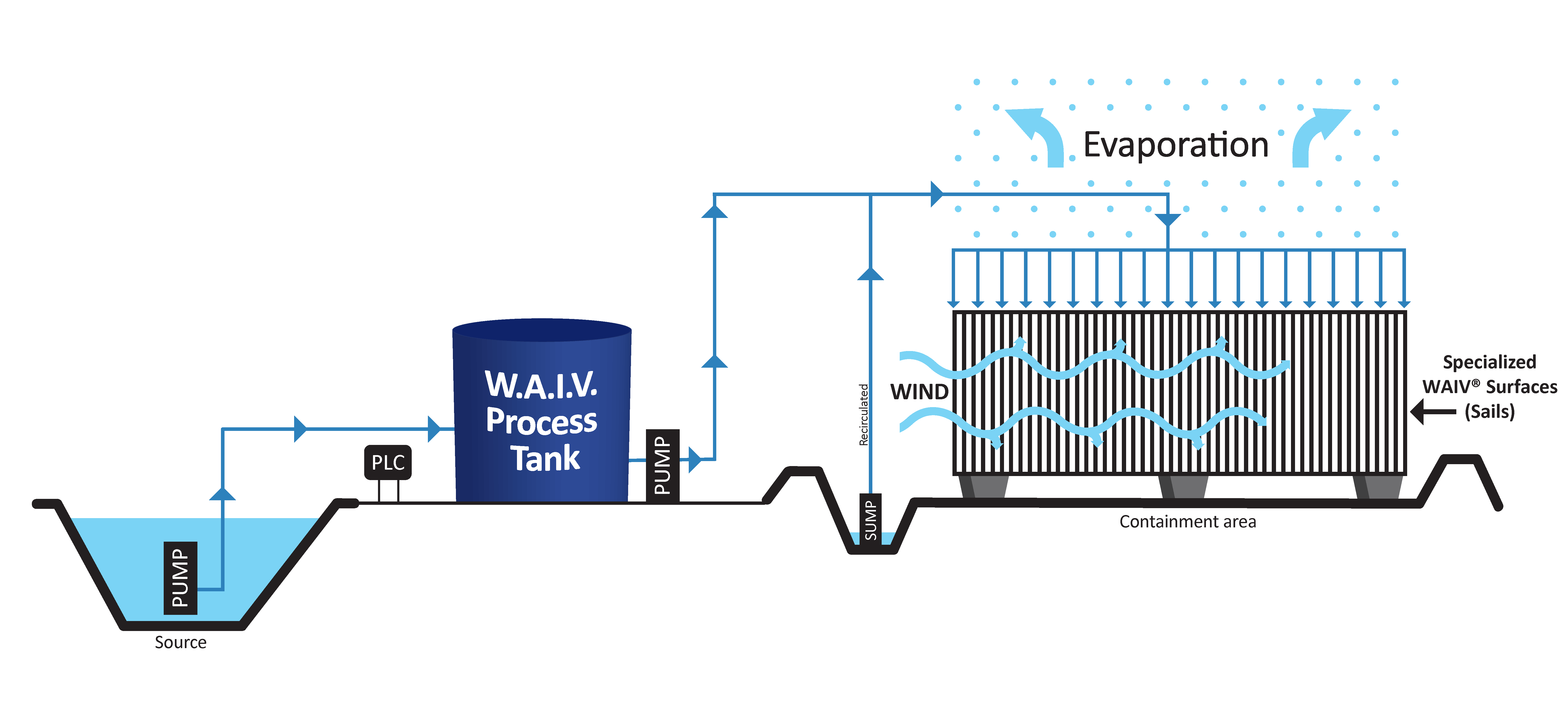"The Vertical Evaporation Pond!"
NO SPRAY - NO MISTS - NO AEROSOLS - NO FUEL - NO BLOWERS - NO DRIFT



Wind-Aided Intensified eVaporation, or WAIV®, is a proven technology in the desalination industry developed for the evaporation of high TDS brine. It has been adapted specifically for the evaporation of other industrial wastewaters.
The fundamental principle of WAIV® is to create a high density of wetted surface area within a very small footprint. Wind naturally passing through the sails causes intensified and rapid evaporation of large amounts of liquid.
BENEFITS & FEATURES
- Large wetted surface area in a small footprint
- Significant financial savings (25-50%)
- Driving evaporative force is wind (not fuel)
- Modular-installed in "units", each consisting of a small footprint (80' x 20’) and more than 62,000 sf (1.4 ac) of surface area/unit
- Evaporates 2,000 to 5,000 gpd per unit
- Effective for leachate, RO brine, oil and gas liquids, and many industrial wastewaters
- Applicable in both humid and cold climates
- Not dependent on off-site WWTP
- Managing liquid waste with an on-site WAIV® system is a GREEN technology that reduces liability and lowers your carbon footprint!
- Mobile pilot unit available! Check out the impressive results from earlier tests!

PROCESS FLOW DIAGRAM
A WAIV® unit consists of a small framed structure with a large number of specialized sails designed specifically for this application. The wastewater is distributed across the top of each sail where three natural forces act on the liquid:
- Gravity naturally pulls the liquid downward onto the sails.
- Capillary action generated by the hydrophilic nature of the sail draws the liquid laterally and spreads it out across the large surface area.
- Wind (even at slow speeds) naturally passing through the gaps in the sails causes intensified and rapid evaporation of large amounts of liquid.
Watch our short demonstration video about the technology:
FREQUENTLY ASKED QUESTIONS

